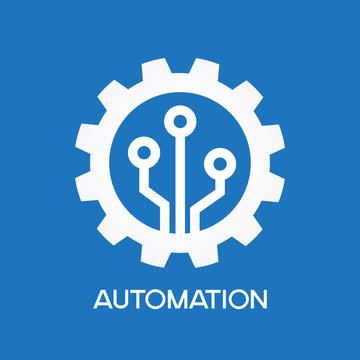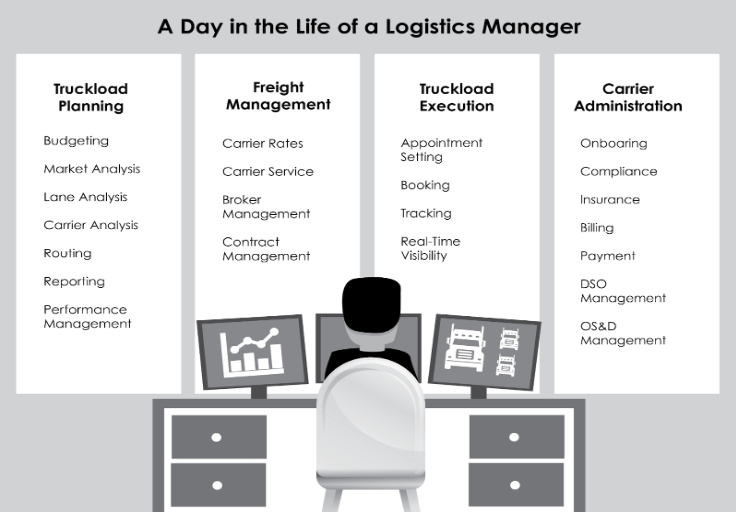


Sleek Technologies Named “Procurement Solution Of The Year” From SupplyTech Breakthrough For Second Year In A Row
Annual Awards Program Recognizes Sleek Technologies for Innovation in the Global Supply Chain Technology and Logistics Industry CHICAGO - June 22, 2023 – Sleek Technologies, a technology data company, and leader in AI-driven autonomous procurement, today announced that for the second year in a row, it has been selected as “Procurement Solution Of The Year” in the annual SupplyTech Breakthrough Awards program conducted by SupplyTech Breakthrough, a leading independent market intelligence organization that evaluates and recognizes standout technology companies, products, and services in the supply chain technology and logistics industry around the globe. Advanced freight procurement data from Sleek Technologies helps shippers optimize their existing carrier network, as the AI-powered software instantly finds, vets, and transacts with any qualified truck across North America. The company provides both data visibility and automation, helping shippers understand truckload activity, optimize their entire carrier network and comprehend factors that may impact load cost. Sleek’s technology is able to match loads to compliant, asset-based capacity at the right time, location, and price. As a load becomes available, capacity is expanded. The platform implements over 80 configured shipper attributes, predictive AI algorithms, and a system of measures considering the likelihood of a driver’s interest in a particular load. Carriers who best match the criteria are the only ones granted access to bid on the load. This eliminates the middleman from the process and allows carriers to set market pricing. Sleek helps full truckload shippers across multiple verticals including Building Materials, Paper & Pulp, Plastics & Chemicals, Food & Beverage, Retail, and more. “A short-sighted approach to freight procurement will lead to temporary gains at the expense of long-term losses....
Revolutionizing Full Truckload Shipping: Overcoming Challenges and Embracing the Power of Autonomous Procurement
The logistics landscape is brimming with complexities and challenges, especially for large shippers who transport goods via full truckload (FTL). Their pain points are diverse and significant, with each capable of causing considerable disruptions in their operations. Therefore, understanding these pain points and how to overcome them is crucial to maintain a smooth and efficient supply chain. FTL Challenges: #1 Capacity: One of the major challenges is securing enough truck capacity to meet shipping needs, especially during peak seasons. The availability of trucks and drivers fluctuates based on numerous factors such as economic conditions, regulatory changes, and seasonal demands. #2 Cost: The costs of FTL shipping is unpredictable. Fuel costs, labor costs, insurance, maintenance, regulatory compliance, and changes in supply and demand can all contribute to the total cost of transportation. And when shippers work with brokers, there is no visibility into what the broker makes versus what the truck is paid. #3 Service: Delays can occur due to numerous reasons including mechanical failures, weather conditions, traffic, or other unforeseen events. These delays can affect the entire supply chain, leading to increased costs and unsatisfied customers. #4 Compliance: Adhering to a myriad of transportation regulations can be a complex process. Regulations may differ based on the type of goods being transported, the regions they're transported through, and they can change over time, creating a need for constant vigilance and adjustment. #5 Sustainability: With increasing awareness of environmental issues, many shippers are seeking to reduce their carbon footprint. However, moving towards more sustainable practices can be challenging due to the nature of the trucking industry and existing infrastructure. #6 Integration: While...
Accuracy and Transparency in Freight Cost Management Is An Urgent Necessity For All Shippers
Shipping is a complex and costly aspect of any supply chain, and thus, the way shippers plan and manage their freight costs is of utmost importance. Traditionally, shippers have leaned on historical 1st party data, along with market averages from 3rd party data providers, to gauge whether they were paying a fair price to transport goods. Digging into market averages on specific routes or shipping lanes that have similar distances, weight capacity, and other logistical factors, has become one of the most reliable points of comparison. Unfortunately, these approaches have limitations because they provide a snapshot in time, and assume market conditions have not changed. They do not account for things like changes in fuel prices, driver wages, seasonal fluctuations, and supply and demand shifts. Using these data sources can lead to a significant misjudgment in shipping costs, especially as new disruption occurs. Marginal Discrepancies in Transportation Management Costs Shipper Millions A 1-2% difference in truckload cost might seem small, but in reality, it can make a humongous impact. For instance, if a company spends $100 million annually on freight, a 2% discrepancy equals $2 million. This is a significant sum that could be saved or, if misjudged, unnecessarily spent. Effectively Manage FTL Budget with 100% Data Transparency The need for greater accuracy and transparency in freight cost management is pressing. Advanced analytics and actionable insights have helped many large shippers uncover resilience, sustainability & cost-reduction opportunities. “When shippers understand the “true-market cost” to ship their unique freight, they finally have actionable insights to effectively manage their freight procurement budget”, said Michael Paul, VP of Sales Sleek Technologies. Sleek Technologies...Autonomous Freight Procurement Eliminates Waste & Bias
Autonomous Freight Procurement is revolutionizing the transportation industry by eliminating waste and bias from critical over-the-road transportation management decisions. Many shippers, who have prioritized supply chain digitization, have embraced technological advancements and are actively uncovering resilience, sustainability, and cost reduction opportunities they never knew they had. What is Autonomous Freight Procurement? Autonomous Freight Procurement involves leveraging advanced technologies, such as artificial intelligence (AI), to automate the manual processes of finding compliant carriers, negotiating rates and terms, coordinating shipments, and managing invoicing. The primary goal is to streamline the logistics process, increase efficiency, and reduce costs. What are Autonomous Freight Procurement benefits? The benefits of Autonomous Freight Procurement are significant. First, it increases efficiency by reducing or eliminating manual, repetitive, and time-consuming tasks. Second, it always chooses the most cost-effective carriers, which reduces truckload costs. Third, it always selects the most reliable and compliant carriers, which improves on-time delivery and overall customer experience. Finally, it provides 100% data transparency, empowering shippers to make stronger, data-informed decisions. Overall, Autonomous Freight Procurement is a powerful tool for optimizing logistics operations and improving the bottom line. By leveraging advanced technologies such as autonomous freight procurement software, shippers can stay competitive in today's fast-paced business environment and deliver the best possible service to their customers.
Eliminate Costly Transportation Decisions By Closing The Data Gap
Imagine having to optimize something without having all the facts and data. This is what transportation/ logistics professionals are forced to do all the time. Unfortunately, many shippers don't have actionable data and rely heavily on historical benchmarks or market averages when making crucial transportation decisions. This approach leads to implications that could impact a large company's financial health by millions of dollars. Several issues can be solved by closing the freight procurement data gap, such as selecting the best possible carrier for each run, and level-setting truckload prices. Poor Carrier Selection Many shippers continue to use the same roster of carriers, even when far better options are available because they lack actionable insights to identify existing problem areas. It’s like the old saying… You can’t fix what you don’t know is broken. Without complete and accurate carrier performance and pricing data, shippers can’t make informed data-driven decisions about which carriers to keep, drop or add. This leads to suboptimal carrier selection, higher transportation costs, and poor service levels which lead to unhappy customers. Not Understanding Truckload Price When working with freight brokers, shippers are presented with a non-transparent truckload cost, with no insight into how payments are divided between brokers and trucks/carriers. To truly comprehend the real truckload cost, it's crucial to obtain pricing directly from the truck/carrier without any hidden middlemen fees. Incomplete data puts shippers at a massive disadvantage and falls short of providing the insights necessary to level-set or standardize truckload pricing across the entire carrier network. Overpayment leads to millions of dollars in transportation budget overages, and underpayment leads to poor service levels and late...
How Continuous Improvement Mindset Has Supercharged Freight Procurement
In today's rapidly changing business environment, organizations are looking for ways to stay competitive and maintain their edge. One crucial area that can significantly impact the bottom line is freight procurement. By embracing a continuous improvement mindset, shippers can supercharge their transportation efforts, reduce truckload cost, and strengthen customer service/ satisfaction. This blog will explore the reasons why continuous improvement is essential in the world of freight procurement and how it can lead to tangible benefits. Freight Procurement Has Remained Unchallenged and Therefore Unchanged Before we dive in, it is important for continuous improvement professionals to understand that the freight procurement process has remained unchallenged, and therefore unchanged due to a lack of technological advancements, and a lack of data transparency amongst third-party logistics partners [3PLs]. It is also important to understand the freight procurement process step-by-step. A typical freight procurement process involves selecting and contracting carriers to transport goods from one location to another at the best cost, service quality, and reliability. The process from start to finish is a long one. Massive amounts of time and energy are expelled at every step, especially when done manually. Steps include, but are not limited to: Defining shipment requirements. Finding carriers. Requesting pricing or tender. Analyzing quotes. Negotiating rates and terms. Awarding loads. Preparing shipping documentation. Monitoring and tracking shipments. Inspecting and verifying shipments. Evaluating carrier performance. How Continuous Improvement Benefits Freight Procurement When the freight procurement process is fully optimized, shippers receive many benefits. Streamlined Processes and Operational Efficiency: A continuous improvement mindset encourages shippers to continuously review and optimize critical supply chain processes to eliminate inefficiencies, redundancies, and bottlenecks....
Q2 Freight Market Update & How Innovative Shippers Have Prepared!
As the Q2 freight market update states, supply (# of carriers) will continue to surpass demand (# of loads). That said, there are plausible scenarios that could help balance supply and demand, tightening market conditions, sooner than anticipated. Possible Q2 freight market fluctuation The freight market is similar to the stock market. Supply (# of carriers) and demand (# of loads) determine truckload cost. The balance between supply and demand can change at any moment due to a variety of factors, including but not limited to the economy and seasonality. For Q2, higher fuel cost and inflation, increased regulation, and overcapacity will continue to push smaller, owner-operator carriers out of business. As trucks idle, supply will decrease because there will be fewer trucks available to move goods. At the same time, demand can increase due to increased seasonal production spikes in produce and building/construction. As noted above, when the balance between supply and demand changes, so should truckload pricing. How Shippers Can Proactively Prepare for Marketing Fluctuation When there’s excess supply (carriers) and rates fall, trucking companies exit the market. When rates rise, new trucking companies enter the market until carrier saturation occurs and rates fall back down again. It’s a vicious cycle. “The key for shippers is to find ways to dynamically stay on top of freight market twists and to pivot quickly with little notice. Remaining static is not sustainable because freight supply and demand always changes,” said Oleg Yanchyk, Sleek Technologies CIO. Forward-thinking shippers have replaced legacy freight procurement processes, such as RFPs, brokers, and spot quoting with AI-powered software so there are no delays when reacting...
Top Tips To Quickly Fill Gaps When Transportation Teams Are Burned Out.
Transportation teams are burned out! Studies have revealed that over 15% of transport and logistics workers are contemplating leaving their job due to excessive stress. Why? Most teams have heavy lifts, are understaffed, and lack the proper tools to successfully perform their job. Specifically, they need c-suite acknowledgment, actionable data, and smart technology to achieve their goal which is to deliver goods on time, at a fair market price. US Domestic Truckload Supply Chain Teams Feel Like They’re Running On Treadmills And Getting Nowhere. Truth said, there are not enough hours in the day for transportation/ logistics managers to deal with day-to-day requirements, fire drills, and strategic initiatives. They have many tasks including, but not limited to, transportation planning, procurement, dispatching, routing, tracking, and invoicing. Freight procurement alone is a full-time job. Hours are spent finding and then vetting new carriers for safety and compliance. After a carrier has been approved, more time and energy are spent onboarding the new carrier. As more carriers are added to the network, there are more vendor relationships that need to be juggled and managed. “US Domestic Truckload Supply Chain teams have a heavy lift and are short-handed,” said Michael Paul, VP of Sleek Technologies Sales. “Week after week, shippers tell me they're trying to juggle a number of activities that leaves them feeling like they're on a treadmill and not getting anywhere. They are so focused on annual bids, dealing with fire drills, and being short-staffed that they feel like they don't have time to look at innovative solutions.” Unfortunately, these problems are compounded when the team is down a resource due to...
